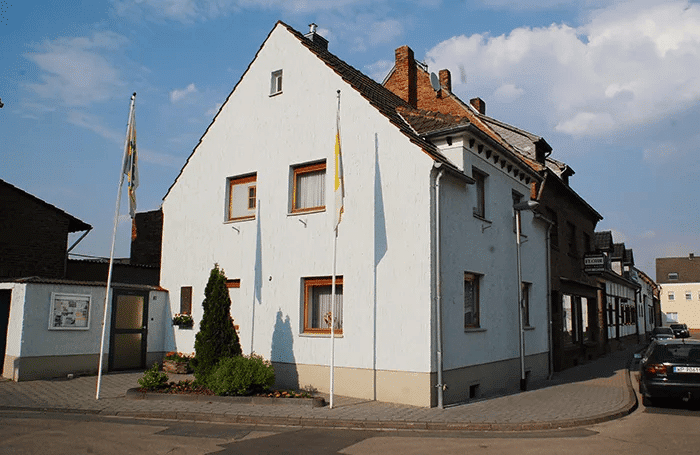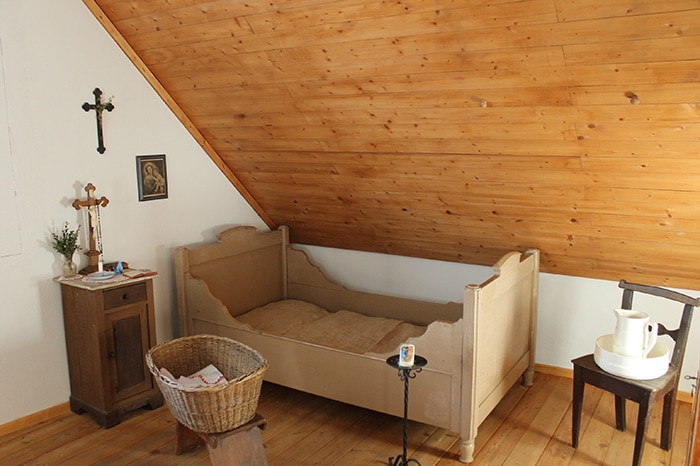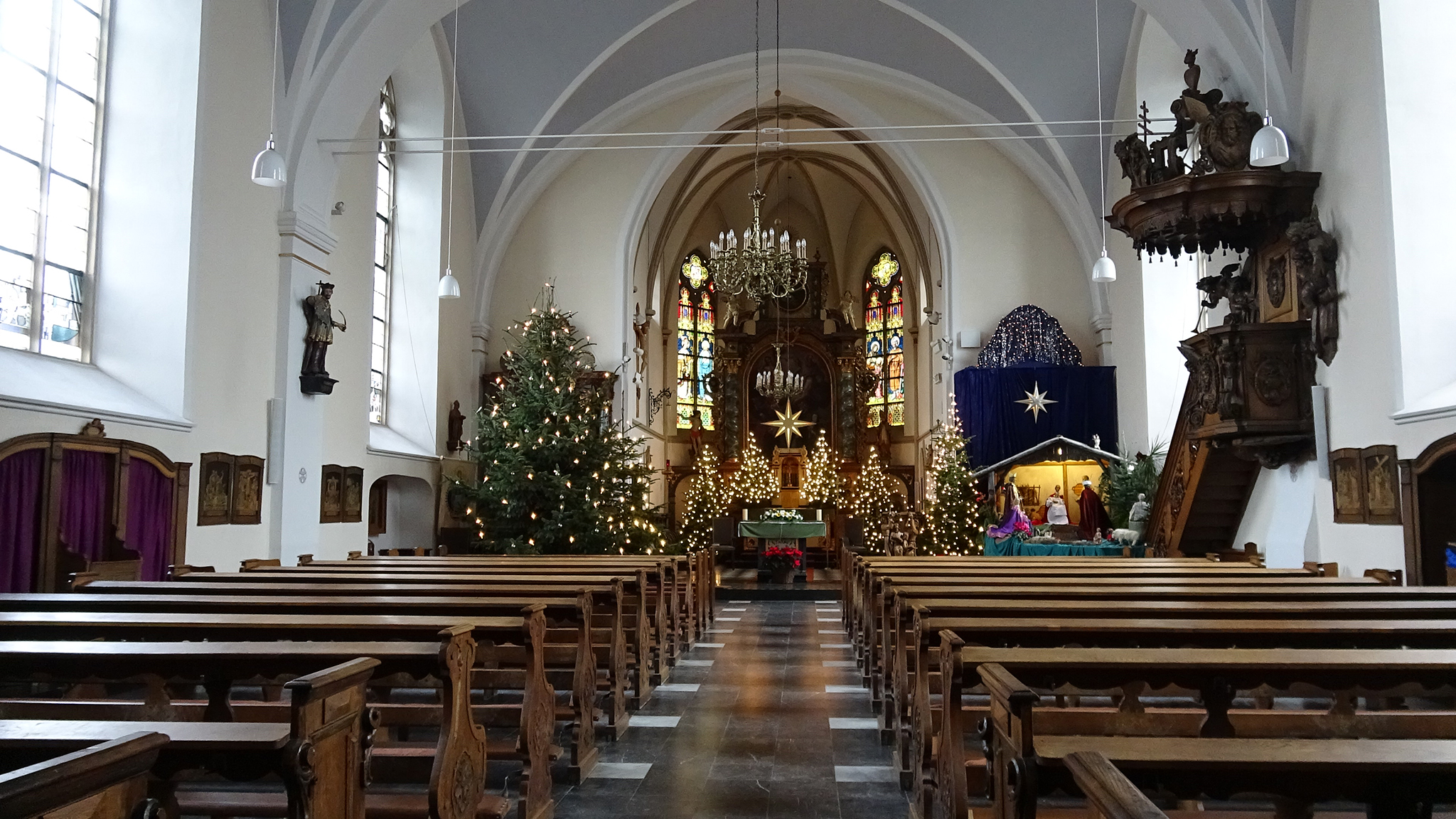On November 16, 1885, a very common incident took place in Gymnich: the birth of a child – Joseph Kentenich.
In Gymnich! A small town, with a population of 1901 then, made up mostly of very poor people: artisans or farmers, a place where everyone knew each other. But is this information really important when we talk about Father Kentenich’s life?
The place of birth of a person is much more than a personal fact on his or her birth certificaate. For example, the Church has the tradition, in several cases, of linking the names of the saints to their places of birth: Francis of ASSIS; Therese of ÁVILA, Ignatius of LOYOLA.
Francis, Therese, and Ignatius were influenced by these specific places and these, in turn, owe their importance and “fame” to these saints. We must not forget Jesus and Mary of NAZARETH. “The place of the incarnation of our faith requires being located in space and time!” (Father Angel Strada – on the 120th anniversary of Fr. Kentenich’s birth).
The Grandparents’ House: a welcoming place

On the day of Father Kentenich’s birth we are invited to “spiritually” visit his birthplace in Gymnich. We know that Joseph, as a child, lived in his grandparents’ house, on a small property that the couple acquired shortly after their marriage. Here Joseph lived until he was just over 8 years old, surrounded by the kindness and piety of his grandparents; by “adventures” with his cousin Henrietta and, above all, by the tenderness of his mother Katharina, a hard-working, dedicated, frugal, modest, deeply religious woman who loved her family very much. “My mother was a very noble and holy woman,” Father Kentenich remarked during a conversation.
In this environment Joseph learned to read at an early age and felt welcomed and loved in such a way that his character disposition, his willpower, his inner search for freedom and his love of truth were able to develop in a free and original way.
The attic and its personal message to each of us

It is quite impressive to see the house where little Joseph Kentenich lived. But it is even more impressive to see the place where he was born: the attic, a small room transformed into a bedroom for the young mother who was expecting her son. There, his mother faced her own fears and anxiety, which led her to consecrate her child, still in her womb, to Our Lady’s care for the first time.
A bed and a small basket converted into a cradle (although they are not the originals of the time, but reproductions) help us to realize the poverty and simplicity in which this family lived.
Father Kentenich’s childhood and youth were characterized by major family difficulties: pain, separation, and loneliness, which undoubtedly shaped his life. However, he did not allow these difficulties to “define” him. His profound Marian experience, in which he perceived Mary as the “Universe’s Equilibrium” and of his own life, as Mother and Educator, formed him and opened his heart to an unshakable faith in God’s Providence, making him, besides a great Founder, Father and Educator of many souls.
Therefore, when we visit this place, we are invited to reflect on our own origins and our lives. We too bear in our history the place of our birth and the “environment” in which we lived. Parents, siblings, grandparents, relatives, neighbors! We could say: “our hidden years”!
Father Kentenich invites us today, in a special way, to look at our life through the “eyeglasses of Divine Providence”. Let us pause for a moment to reflect: family situations, family “burdens”, hurt feelings… What imprints have they left on my life? How do I live with these “imprints”? Can I find in these “imprints” – or perhaps wounds – God’s love and plan for my life? And what do we do with all this? We cannot change what we do not accept or what hurts us in our lives, but we can learn to find God in what hurts us and leaves some marks. It’s not a “magic solution,” nor should it be! But it is a way that helps us to have a much more personal and intimate relationship with the “God of life”.
The house’s garden: a symbol of the protection of life

In the small garden behind the house there is a wayside shrine that was unveiled in 2007: a relief image of the Mother Thrice Admirable, Queen and Victress of Schoenstatt and a symbol at the bottom of a column made of stone. This symbol represents a sheltering hand with a newborn baby cradled in it. It wants to represent the hand of God the Father, who directed and guided Father Kentenich’s life, the hand of his mother Katharina, who accepted and welcomed this child in difficult circumstances. But it also represents our hand, which is called to welcome and support every life, including our own, especially when it needs protection and help in order to develop.
Mother Church, where dreams begin

Little Joseph’s surroundings included the parish church of St. Cunibertus. This is where the family gathered to celebrate the Eucharist and for personal prayer. This is also where he was baptized on November 19, and the baptismal font we find today in the church is the one where he was baptized. Still preserved here are the original steps and pulpit on which little Joseph, almost six years old, climbed up three steps higher than his playmates and said in all seriousness: “When I grow up, I will be a priest and then I will speak like this: ‘Devout listeners…. Amen!’ I still don’t know what comes in between. I have to learn that first.” Surely at that time no one imagined that his childhood dream of a vocation would one day come true and that Joseph, as Father Joseph Kentenich, would introduce his sermons at a very young age with the words “Devout listeners!”.
Searching for your origins

Joseph was undoubtedly impressed by the tradition of the Gymnich Cavalcade. This horseback procession that takes place every year on the feast of the Ascension of Jesus is traced back to the Fifth Crusade, which took place in the early 13th century, when the knight Arnold I of Gymnich experienced God’s special protection from mortal danger and, in gratitude, promised to hold a horseback cavalcade every year. This tradition was maintained even during the critical war years, being suspended only during the 30 Years’ War and in 1666, the year of the plague.
And the tour can be continued…. There is much to see and think about here, in little Gymnich… A visit that can be further enhanced, especially by reading the book “The Hidden Years!” [1]
Father Kentenich was a person who had a deep longing for freedom in his heart. A freedom that was much greater than the lack of external shackles or bars: a freedom that turned inward; that sought the free man within: the freedom of the children of God. In this “visit to Gymnich” he asks each one of us: do you also want to be free? Seek God’s presence in your personal history. In every situation. And do not rest until you have discovered God’s personal love in every experience, good or bad, happy or sad, and even in sin.
This is a visit worth making – and it may transform your life!
[1] Book: The Hidden Years – Father Joseph Kentenich: Childhood and Youth (1885-1910). Dorothea M. Schlickmann. Mother and Queen Society, Santa Maria/RS, 2008.
Source: Schoenstatt Brazil – schoenstatt.org.br
